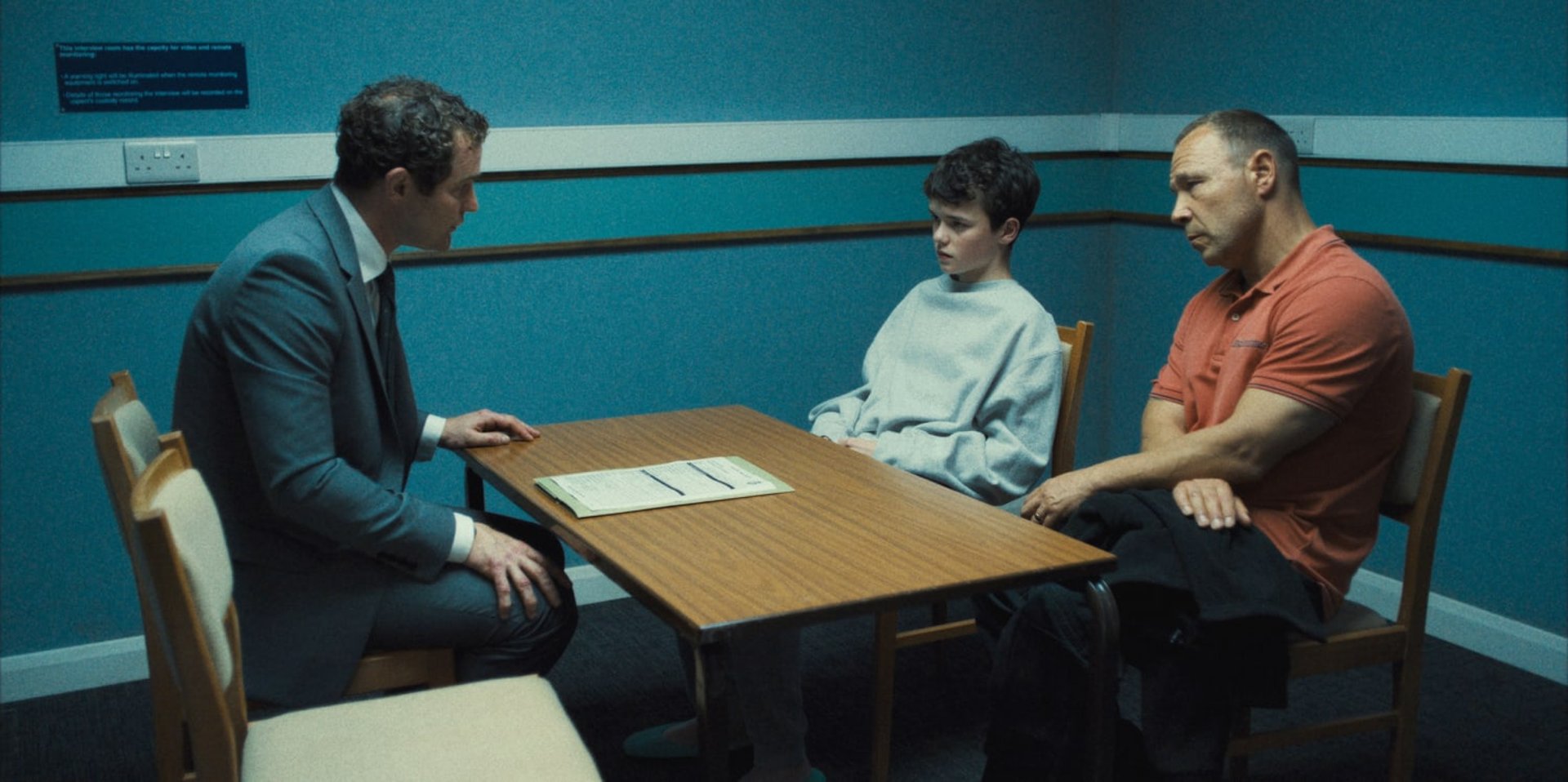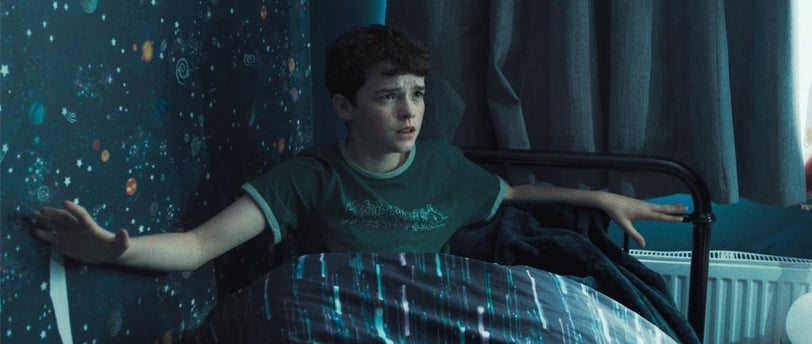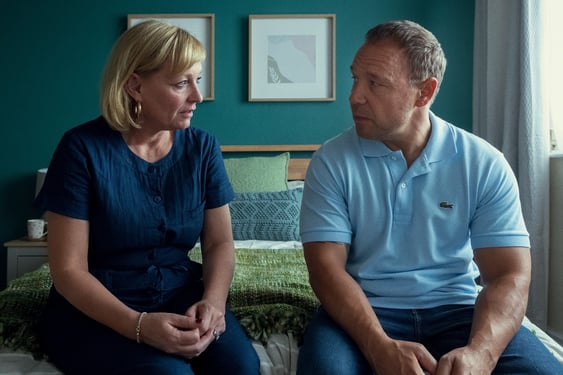
Adolescence: A Haunting Mirror of Modern Youth
Through its groundbreaking narrative and technical brilliance, Adolescence transcends traditional storytelling, offering a raw and unflinching look at the societal influences that shape today's youth. With seamless editing and authentic performances, the series raises profound questions about identity, family, and the digital age's impact on innocence.
B H A R A T H
3/25/20254 min read


In a world where storytelling often prioritizes spectacle over substance, Netflix’s Adolescence stands out as a refreshing alternative—a series that courageously mirrors the chaotic, exhilarating journey of growing up. Seamlessly blending technical innovation with deep emotional resonance, this mini-series transcends genre boundaries, offering not just a narrative but an immersive experience. With its audacious editing that intertwines scenes like an invisible thread and performances so authentic they blur the line between actor and character, Adolescence exemplifies the true essence of youth. It neither glorifies nor vilifies its characters; instead, it envelops viewers in the exhilarating highs and heartbreaking lows of teenage life with unwavering honesty.
The story of Adolescence is about a 13-year-old boy who is accused of a violent murder. He is in an interrogation room, and we don’t know if he did it or not. The series starts after the crime, with the boy facing detectives. His nervous behavior and words make people wonder if he's guilty. The detectives look into his alibi, showing evidence like a bloody jacket and strange text messages. This leads viewers to question what really happened. Did the boy act out of anger, a need for help, or to impress others on social media? The show doesn't give easy answers.
The interrogation room represents a society that is failing. The boy’s struggles show how young people today are influenced by online figures who promote harmful ideas like toxic masculinity and quick wealth. The series criticizes these negative parts of modern youth culture. It highlights how relationships have become shallow, how screens replace real connections, and how innocence is lost as bullying becomes digital.
As we learn more about the boy’s past—his neglect at home, bullying at school, and attempts to be "tough"—the question changes from "Did he do it?" to "Why did he do it?" This isn't just a crime story; it's about a society that lets its children down. The real danger is not just in the interrogation room, but in every online interaction and unrealistic ideal they face.
Subsequently, the narrative transitions to the boy’s school, revealing a fractured environment. Students disregard teachers, bully one another for amusement, and everyone is glued to their phones, consuming videos on “how to be tough” or “get rich quickly.” One detective has a son in the same school, and their relationship is strained and distant. The son avoids eye contact with his father, highlighting the disconnect between parents and children today. In the background, students are unkind, teachers overlook issues, and kids mimic toxic online trends. The school is more than just a setting—it shows bigger problems in society: kids caught in negative influences without real guidance, and adults who have stopped trying to connect. The boy in the interrogation room isn't just a "bad kid"—he shows what happens when the world teaches boys to be angry, alone, and uncaring.
In the third episode, Jamie meets with a child psychologist in a small, tense room. She poses challenging, uncomfortable questions to uncover why he might have committed the crime. Initially, Jamie appears polite and anxious, but as the questions probe deeper—“Did your dad hurt you?” “Do you think girls owe boys attention?” —his mood fluctuates dramatically. One moment, he’s composed; the next, he angrily echoes statements he’s encountered online, such as “Women only care about money” or “Nice guys are losers.” He contradicts himself:
The psychologist is taken aback when Jamie suddenly opens up, expressing that he enjoys talking to her because she treats him like an adult—unlike his parents. These rapid changes reveal his confusion and turmoil. The episode illustrates that Jamie isn’t simply “evil”—he’s a troubled youth shaped by toxic online content about masculinity, neglected by his family, and yearning for validation. By the end, even the psychologist appears concerned, recognizing that Jamie’s mind is clouded with harmful ideologies absorbed from the internet. The episode does not excuse his actions but prompts reflection: How many other children are similarly lost?
In the fourth episode, we see Jamie’s family dealing with the effects of his arrest seven months later. On his dad’s 50th birthday, they try to act normal—cutting a cake and pretending to be hopeful. Jamie sends a drawing to his dad, giving a brief moment of hope. But this hope is soon crushed. Their car is damaged with the word “NONCE,” showing the community's hate. Neighbors avoid the family, and Jamie’s sister is bullied at school.
The saddest part is when Jamie calls from jail, sounding tired and hopeless: “I’ll just say I did it. The evidence is against me.” His parents are heartbroken. Later, in their bedroom, they talk about their guilt. Jamie’s dad, who was raised in a strict and harsh home, says: “I thought being ‘soft’ would fix everything.” The episode ends with Jamie’s dad crying in his son’s empty room, holding Jamie’s old teddy bear. It’s a quiet moment, showing a man facing the hard truth that love wasn’t enough. The family isn’t just sad about Jamie’s arrest; they are mourning the boy they lost long ago, in a world where “being kind” meant letting him suffer silently.
Technical Mastery and Impactful Storytelling:
What makes Adolescence truly remarkable is its technical boldness. Each episode looks like a single, continuous shot, demanding precise scriptwriting, acting, and cinematography. The camera moves smoothly through various settings without visible cuts, creating an intense, real-time experience that connects viewers to the characters’ emotions. This requires precise choreography: actors hit their marks exactly, lighting changes smoothly, and dialogue flows perfectly. The sets are designed to let the camera move effortlessly between scenes. This technique mirrors the characters' trapped lives, highlighting their inability to escape their situations.
The performances are incredible. Actors deliver powerful scenes without edits or retakes. The child actor playing Jamie shifts from vulnerability to anger seamlessly, showing a range of emotions. Even the background actors feel genuine, as if caught in real life.
In conclusion, Adolescence is a groundbreaking series that combines technical skill with deep humanity. It highlights the chaos of modern life and its impact on the young, while showcasing the power of art to provoke important questions about our society and its influence on children.



